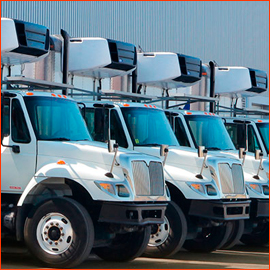
anyLogistix 2.13 has been released with major updates that include improved data import and export capabilities and speeded-up performance.
You can download the latest version by clicking ‘Check for Updates’ in the Help menu, or by visiting the Downloads page.
Let’s see what it has to offer!

Have you ever designed a digital supply chain? If yes, then you know how complex this process might be. Miss just one important element and your supply chain model will fail to deliver accurate results. What to do?
In this webinar, our partners at SimWell in North America demonstrate 3 key tips and tricks that make a world of a difference to model building.

Onshoring a supply chain for resiliency and sustainability is a strategy worth evaluating, but how to do this effectively? The COVID-19 pandemic, trade-wars, and sanctions are making the question more urgent. North American simulation supply chain specialists, SimWell, answer this question and more in their webinar Evaluating Onshoring Strategies with Network Optimization and Simulation.

Predictive analytics is a powerful tool for optimizing supply chains and managing risks. Learn how predictive analytics can help reduce supply chain costs and improve service levels. This blog introduces the broad field of supply chain predictive analytics as well as its connection with simulation and anyLogistix.
Read more
Introducing our newest supply chain design and analytics software release – anyLogistix 2.12. This version features advanced capabilities for simulating sophisticated transportation policies. Supply chain and logistics specialists, for networks small and large, can better assess shipping options, optimize shipping fleets, and account for custom facility work and shipping times.

Many businesses turn to Excel spreadsheets when planning for their supply chains. This traditional approach is relatively easy yet has a limited application area when it comes to solving complex business challenges. Beyond this method, the most powerful techniques for supply chain design are analytical optimization and dynamic simulation.
Learn how to choose the right one for your business.

We can already say that 2020 was a difficult year in many spheres of life. In that context, it is no surprise that businesses have begun to think more and more about the importance of supply chain resilience and reliability.
Let us walk through what is needed for supply chain resilience and reliability and show how anyLogistix can help turn theory into reality.

Collaboration and agility in supply chain teams are key to gaining a competitive advantage and returning higher profits. This means how quickly and easily you can capture data, model your supply chain, and do analysis to support changes is critical. Get it right and you can rapidly adjust tactics and operations based on informed decision making.
Watch the webinar and see how with SimWell Managing Partner Jon Santavy and Senior Supply Chain Consultant Alex Franco.

anyLogistix 2.11 introduces new features, example models, and a new Advanced Transportation Optimization experiment. All editions of anyLogistix, including the free Personal Learning Edition, are updated to 2.11.
To get the latest version, ‘Check for Updates’ in the anyLogistix help menu or install from the download. Read on for highlights from the update.

Learn how ITC Infotech developed a tool to inform supply chain decision making by taking live data and combining it with simulation modeling to provide insights into the sources of potential problems and predictions of future supply chain behavior.
Read more